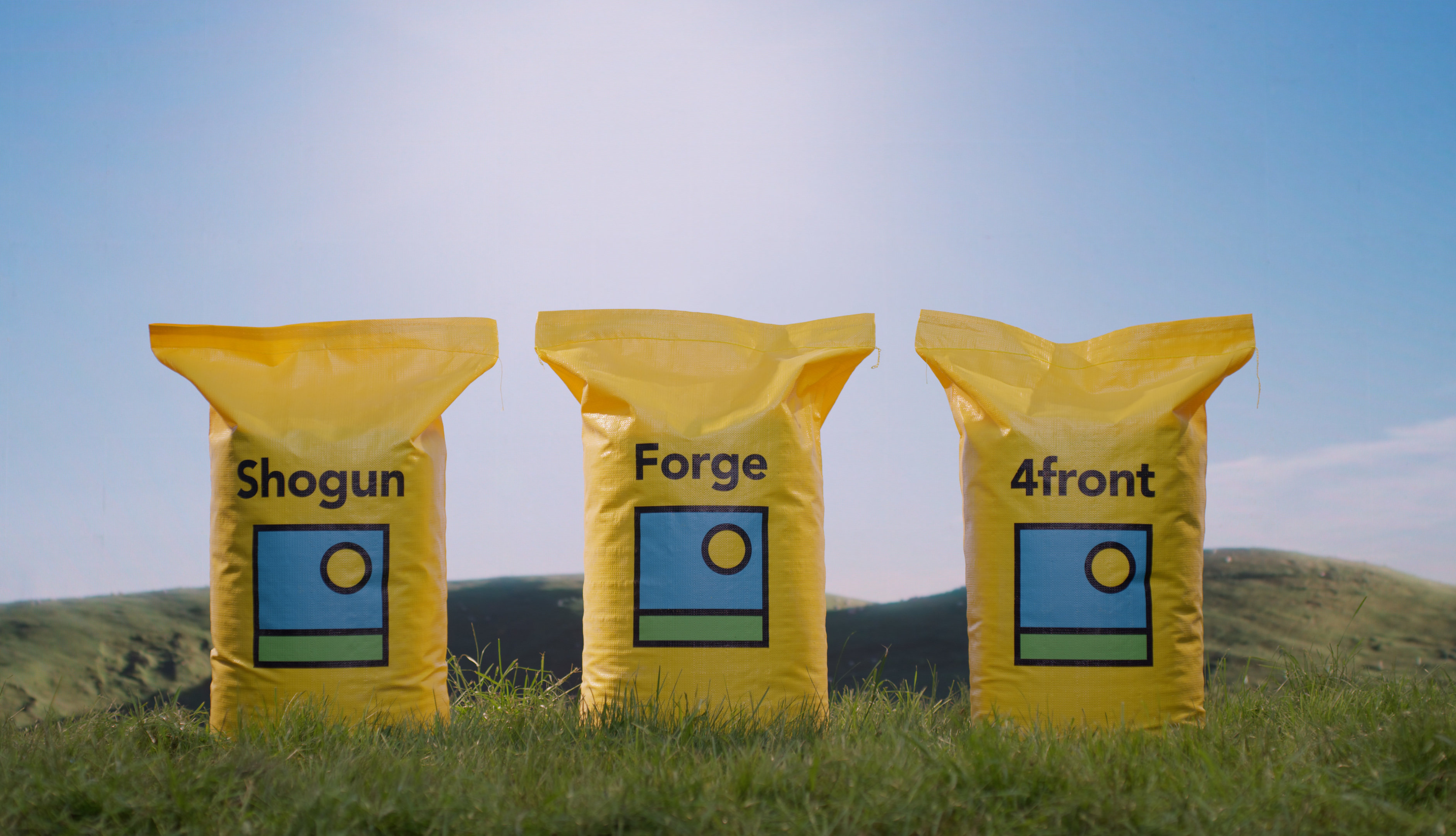Step lightly - softer grass cushions farm footprint
Looking for ways to make your farm more sustainable in the future? One solution could be under your feet right now. And if it’s not, you can put it there in the next few weeks.
Top tetraploid ryegrasses 4front, Shogun and Forge aren’t just great for your cows.
They have encouraging environmental features as well, to help future-proof your farm.
With autumn sowing on the horizon, there’s no better time to review the opportunities these might create, says Barenbrug pasture systems manager Blair Cotching.
“Pasture renewal is all about setting yourself up for the future. Farming is changing fast; sowing the right ryegrass is one way to keep up with those changes.”
So what makes 4front, Shogun and Forge friendly to both animals, and the environment?
The short answer is taste, Blair says.
More with every mouthful
“Cows love them! They have juicy leaves, with softer stems, which are very easy to eat. And that applies even when they are a bit longer than what we would say is the best grazing height for diploid ryegrass.”
This difference in leaf length before grazing is quite small – only about half a leaf more than diploids.
But it leads to a cascade of potential benefits, starting with more metabolisable energy (ME) per hectare, higher cow intakes, and up to 10% more milk per cow.
Same production, fewer cows
When every cow generates extra milksolids, because it’s so easy for her to eat as much ME as she needs, it then becomes feasible to run fewer cows without sacrificing overall production or income, Blair says.
Smaller herds have a smaller footprint. You don’t need as many replacements, for example. Animal health, supplement, rearing and other herd costs drop.
Lose less nitrogen
As ryegrass re-grows after grazing, its carbohydrate levels rise, while crude protein and nitrogen content fall.
So grazing 4front, Shogun and Forge when they’re a bit longer reduces the amount of nitrogen eaten by your cows.
That’s good for leaching, Blair says. When cows eat more nitrogen than they need, they excrete the surplus in urine or dung. It’s this surplus that contributes to leaching.
All-round efficiency
Being able to leave Shogun, Forge and 4front slightly longer before grazing also means each plant has extra leaf area to capture energy from the sun, Blair says.
Think of this as giving the plants bigger solar panels for photosynthesis.
Again, it’s not a huge difference in itself. But when you multiply this effect across thousands of plants in a paddock, it adds up to higher pasture growth.
Other benefits associated with tetraploid pastures include a longer grazing round; more time for the ryegrass plant to respond to nitrogen fertiliser and a proportionately higher nitrogen response.
Which one?
Shogun hybrid tetraploid ryegrass is a one to three year pasture. If you have a paddock you know is going to be sown in crop in the next season or two, and you want it to grow plenty of high quality feed in the interim, sow Shogun this autumn.
Forge hybrid tetraploid ryegrass is a three to five year pasture. It is denser and more persistent than Shogun. Sow Forge for a longer lasting tetraploid that comes with a significant yield advantage (+14%) over similar grasses.
If you want new pasture that lasts longer than a hybrid, but still has the animal, management and environmental benefits of a top tetraploid, sow 4front perennial ryegrass.
Plan for TLC
“Straight tetraploid pastures won’t suit all systems,” Blair says. “They aren’t as dense or robust as diploid pastures, so using them across your farm takes some thought to get the best from them.
“Their palatability means they are easier to overgraze so moving stock on at the right time is important, and you need a good wet weather plan. But if you can harness them in your systems there are significant growth, cow intake and environment benefits available.”
Keen to know more?
Email info@barenbrug.co.nz today.


